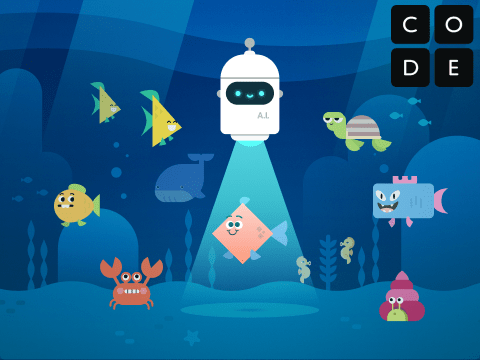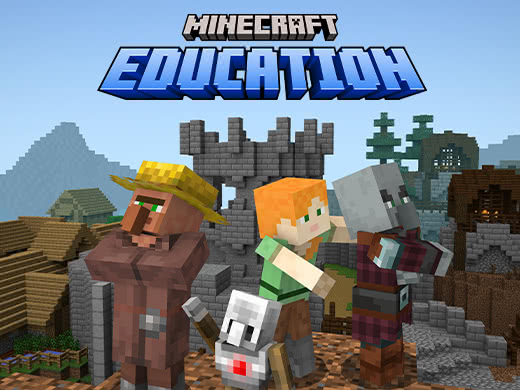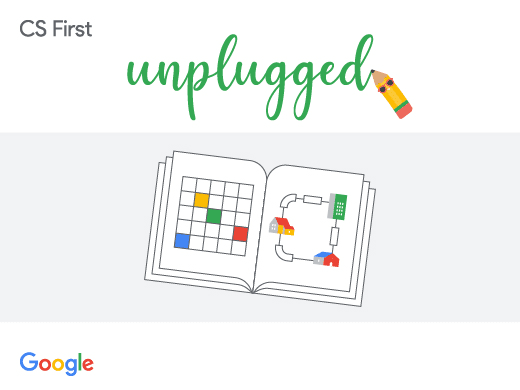Teach
About
Privacy & Legal
We rely on technology to keep us connected, but we’ve also seen how biased algorithms can divide us on the basis of race or gender. We rely on our technology to keep us informed, but we’ve also seen how easy it is to spread misinformation. We rely on our technology to stay productive, but we’ve left behind those who don’t have access to the internet.
How CS and technology are used and applied in the real world is a crucial part of learning computer science. We can help students understand some of the challenges that people around the world face and inspire them to think deeply about the role computer science can play in creating a more equitable and sustainable world.
Here are some themes and questions to spark discussion in your classroom about the role of computer science in creating positive social change. Download this discussion guide as a PDF.
Building a society we want to live in begins with understanding the problems we need to address. We can use technology to detect and even predict problems.
Have students read this story about how smartphones are being used to detect earthquakes and then work in pairs or groups to answer the questions below. Then discuss as a class.
Questions for discussion:
Learning computer science gives us a foundation to find solutions. It is our creativity then that enables us in every industry and aspect of life to design solutions built upon that foundation.
Have students read this story about how urban planners are using AI in Minecraft to design better cities, and then work in pairs or groups to answer the questions below. Then discuss as a class.
Questions for discussion:
From video chats and classes to apps that allow us to sing together remotely, people have built technical innovations that have kept us connected with some semblance of community through a global pandemic. And, we will continue to find ways to humanize technology to unite us.
Have students watch this video (link to original video at CBS News) of students from Chino Valley Unified School District singing an a capella version of “Over the Rainbow” via video conference after covid-19 canceled their annual Choral Festival. Then have them work in pairs or groups to answer the questions below.
Questions for discussion:
The people creating technology should look like the people using it. Everyone must have the opportunity to learn computer science to have a part in building a future where all of our voices are heard.
Have students read this story about a new tool that helps root out potential biases in image sets that are used to train artificial intelligence (AI), and then work in pairs or groups to answer the questions below. Then discuss as a class.
Questions for discussion:
If you're looking for an engaging way to introduce your students to the concept of #CSforGood, there are lots of tutorials and activities to choose from!

Computer science is about so much more than coding! Learn about AI, machine learning, training data, and bias, while exploring ethical issues and how AI can be used to address world problems.
From Code.org. For grades 3 and up.

Use the power of code to bring two villages together. Players will experience empathy and compassion for their neighbors, learn cooperation and inclusion, and embrace the diversity that makes us all uniquely special.
From Minecraft Education. For grades 2 and up.

No computer or internet? No problem. Try the CS First Unplugged activities to explore how computer science can solve problems like helping people stay connected while apart. "Plugged in" Scratch activities are available too!
From Google. For grades 2 through 8.
SciGirls: Code Quest (SciGirls/Twin Cities PBS): In this online coding adventure, take Subby the submarine through underwater challenges, using code to find various items and collect scientific data on the ocean floor. A self-guided tutorial for beginners in grades 2-8.
Climate Clock (Vidcode): In this Hour of Code activity, students will be guided through the construction of their own climate clock. They will engage with objects, properties, variables, functions, and loops, and customize text to convey their message for the world and their hopes for the future. A self-guided tutorial for beginners in grades 6 and up.
Code a Happy Place Meditation App (CodeSpeak Labs): It’s been a stressful year for students, but practicing mindfulness can be a challenge. Learn to program a meditation app that transports you to your "happy place." For beginners in grades 2 through 8. Great as a teacher-guided tutorial.
Robot Feelings: The Kind Playground (iRobot): Our robot is learning how to make kind choices when playing with friends. In this game, help Root practice by making four kind decisions in a row. If Root makes a bad choice, it has to start all the way at the beginning again! Let's play together! For beginners in kindergarten through grade 5. Root robot is optional.
Saving Sea Turtles (micro:bit): Create a prototype of a low-power, red LED beach light that can be used for lighting on beach paths which is also safe for sea turtles. For beginners in grades 6-8. Great for learning at home.
See the full list of Hour of Code activities and lesson plans, including many more #CSforGood-themed tutorials, at hourofcode.com/learn!
Every day, organizations and individuals are finding new ways to use computer science to help solve the world's challenges. Here are some real-world examples to take a look at with your classroom.
We want to hear about how your students are engaging with #CSforGood! Use the hashtag #CSforGood or send your #CSforGood stories to csforgood@code.org.